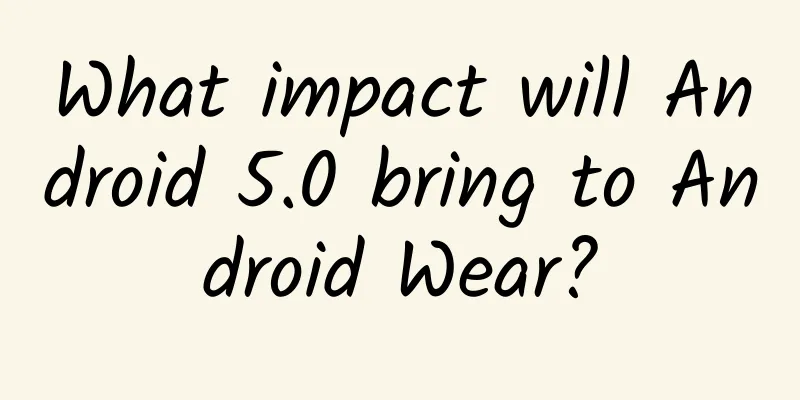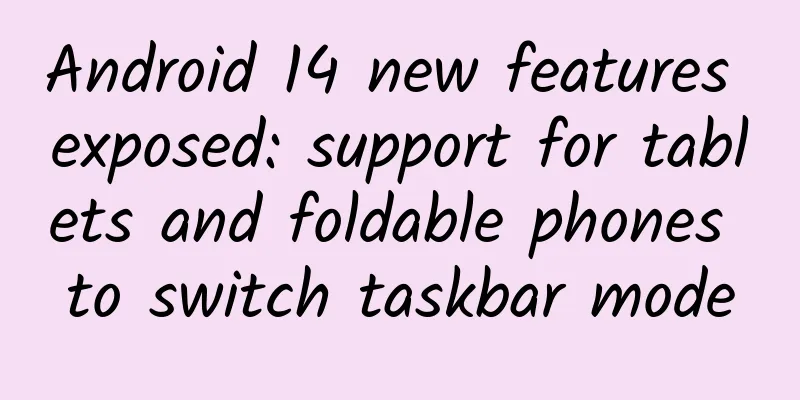What impact will Android 5.0 bring to Android Wear?

|
Google has just announced its latest Android 5.0 Lollipop operating system, and the SDK for the new system has been officially released to developers. Nexus 4, Nexus 5, Nexus 7, Nexus 10, and the recently released Nexus 6 and Nexus 9 will all support the upgrade to Android Lollipop. However, when the new system was released, Google did not seem to mention Android Wear, an operating system developed specifically for smart watches. What special features will Android Lollipop have for Android Wear in the future? Clock interface API
Now in the app store, we can see many third-party smartwatch clock interfaces. Although some of them look good, not all of them are satisfactory. Most of them are very different and don't feel like a watch at all after installation. This is because Google has not released a unified API for clock interfaces. In fact, Google has asked developers to stop launching custom clock interfaces until the official API is officially released. But now it seems that not all developers are so obedient. If you just want to develop a simple clock interface, it is actually very simple, as long as the design looks beautiful, the purpose is achieved. However, as a smart watch interface, it must match the card notification, watch and other applications (whether it is a smartphone or tablet). I believe that when Android Lollipop is truly pushed to the majority of users, a unified and beautiful smart watch clock interface will become mainstream. Project Volta
Every time a new version is updated, Google will add a new feature named "Project". In Android Lollipop, we usher in the new Project Volta. In smartphones and tablets, Project Volta can bring a power saving mode, the battery history management function will help users find the most power-consuming applications, and provide a Job Scheduler API to help devices better manage applications running in the background. I believe we will also see this function in Android Wear in the future. Audio Processing
When it comes to smartwatches, it seems that no one has high expectations for their sound. However, the main way to control smartwatches is through voice commands, so processing sound could mean a higher success rate for sending text messages or executing commands through Android Wear. According to Glenn Kasten of Google, the audio API will be rewritten in Android Lollipop to reduce the delay of input and output. Although this improvement is only 10%, it is enough to make it possible for Android devices to be used as speakers or Laka OK applications as sound sources. If there is no smartphone or tablet, the same function can be achieved through smart watches in the future. Battery Life
We all know that battery life is a big issue for all Android Wear smartwatches, and Android Lollipop will be able to really help. Google has always been committed to improving battery life and using power more intelligently, and Android Lollipop is no exception. Smart watches are the next most promising electronic products after smartphones. If they want to be popularized as soon as possible, the price of the product must continue to drop. However, the price drop leads to a corresponding decrease in the hardware configuration of the device, which will make the device run very slowly and affect the user experience. Google hopes to improve this situation through a project called Android One, which can ensure the device experience and reduce the price to the maximum extent. Android Lollipop, as a popular operating system, can change this situation. When I used the developer preview of Android L, it was clear that the battery life of the device was slightly better than that of Android KitKat, although not in all cases. Android L will bring longer usage time and users will have to search for power less frequently. We all hope that these new power-saving features can be brought into Android Wear. After all, charging your smartwatch every day is not what we want to see. Upgraded with Android Lollipop
When Android Wear was first released, we all thought it was just a 1.0 version, or even a beta version. But it didn't take long for hardware devices equipped with the Android Wear system to be officially sold, and it all seemed a bit too hasty. Although the operating experience has been improved through several updates, Android Wear is still far from being a truly mature product. I speculate that Android Wear was originally supposed to be based on Android Lollipop, and although there is no evidence yet, I firmly believe this. Google should have launched Android Wear at the same time as Android Lollipop in October/November, although it is not the case now. After Android Wear devices were launched, I became more certain of my speculation. Although Google has no plans to significantly upgrade Android Wear recently, I believe that with the continuous improvement of Android Lollipop in the future, these new features will be gradually integrated into the Android Wear system. After all, allowing users to switch more seamlessly between smart watches and smartphones is the purpose of unifying the two systems. |
<<: Why Google interviews never last longer than 30 minutes
>>: Teach you to thoroughly understand the KMP algorithm from beginning to end
Recommend
The final struggle: Trump bans eight Chinese apps including QQ and Alipay
If nothing unexpected happens, January 20, 2021 w...
It turns out there is a flower called Qingming Flower
For many people in the southern region, eating Qi...
The wind chime continued to make strange noises, even when there was no wind? She looked inside the wind chime tube and found...
In July this year, Zoe, who lives in Florida, USA...
The most complete! Summary of mini program channel promotion, saved!
Mini Program is a lightweight product that was no...
Zhihu operation full set of detailed operation guide
The full text is about 5,000 words, and it takes ...
Brand IP marketing advanced from 0 to 1!
When it comes to " IP marketing ", it o...
How to promote WeChat mini program to attract new users?
In the era of mobile Internet, traffic costs are ...
Hu Xiaobo Brand Design Class No. 29 (good quality, with materials, new course in June 2020)
Hu Xiaobo Brand Design Class No. 29 (good quality...
What is the use of NFC on mobile phones? These 6 functions are very practical. If you don't know how to use your mobile phone, you will buy it in vain.
When mobile payment began to become the main tren...
Using Auto Layout to handle proportional spacing issues
Auto Layout is a challenging thing to master. Sta...
What is the use of Kuaishou Blue V certification? How to activate Kuaishou Blue V certification?
This article mainly introduces the use of Kuaisho...
Fixed traffic scale, using ecpm formula to improve advertising monetization capabilities
According to the concept of eCPPM, given a fixed ...
Tesla Roadster to accelerate from 0 to 100 km/h in less than 2 seconds, to be launched in 2019
According to foreign media reports recently, Tesl...
A woman was hospitalized after eating raw pickles. Be careful when making your own raw pickles! It can cause diarrhea at the mildest and poisoning at the worst.
Recently, there was a trending search #Woman lear...
Multiple world records? The ship lock is a hydraulic structure that is not ordinary
recently The Three Gorges North Line Ship Lock st...









